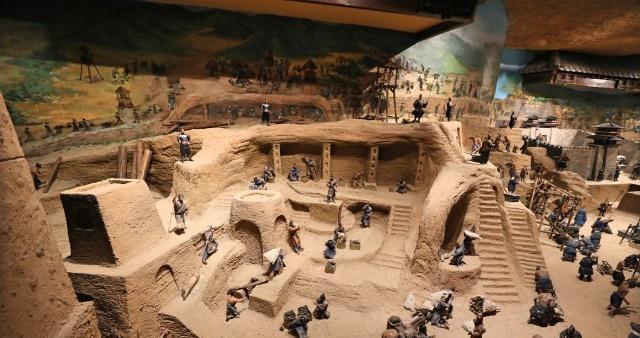The claim that "a large amount of mercury was buried in the mausoleum of Qin Shi Huang" has been discussed endlessly. During the determination of soil mercury in the burial chamber sealed mound, the content reached 1440 ppb at one point and the average content of the remaining 53 points was 205 ppb. It is said that the mercury content of the soil near the Yuchi Reservoir, which is 2370 meters away from the sealing soil, is only 5 to 65 ppb, so the conclusion of abnormal mercury content in the sealing soil is also determined, and then the cause of the abnormal mercury in the sealing soil is from the Qin Shi Huang Mausoleum Underground Palace, which has a "mercury" that symbolizes the rivers and seas.

At that time, as soon as this information was published, it immediately aroused great interest. Because Qin Shi Huang unified weights and measures, unified writing, and unified currency, the Chinese civilization has reached a higher level, and in the eyes of the people, he has extraordinary talents in unifying the six kingdoms, so the image is very high. Although Qin II was faint and incompetent, Qin Shi Huang was indeed an emperor who contributed to Chinese civilization.
For the mercury in the tomb of Qin Shi Huang, many people believe that this is the mausoleum of Qin Shi Huang "symbolizing the rivers and seas with mercury", because Qin Shi Huang was the emperor of the first unified empire and took the great rivers and mountains of China into his pocket, so it is also very likely that the mountains and rivers on the earth will be used as funerary products in the tomb after his death. According to this, more authoritative figures have proposed that due to the protection of a large amount of mercury, although Qin Shi Huang himself died for more than 2,000 years, he may still lie intact in the underground palace. Of course, there are also some experts and scholars who have raised questions. Experts question that if the Qin Shi Huang Mausoleum underground palace is buried with a large amount of mercury, its underground is undoubtedly a very large source of mercury pollution, and there should be medical history data caused by mercury pollution in history; and in the wells of several villages close to the qin shi huang mausoleum, mercury anomalies should also be measured in technical data.
Mercury is vaporized in the atmosphere, so mercury is also found in rainwater, with an average concentration of 0.2 ppb. The background concentration of mercury in water, 0.1 ppb in inland groundwater. Therefore, in the process of measuring the amount of mercury in the soil of the Qin Shi Huang Mausoleum, except for the point where the content reaches 1440 ppb, which is indeed abnormal, the average content of the remaining 53 points reaches 205 ppb, which is also within the normal range of the average abundance of the soil body of the earth's crust of 0.03 to 0.3 ppm (that is, 30 to 300 pb); the mercury content of groundwater here does not exceed the normal value of 80 pb. It can be seen that the claim that the mercury content of the qin shi huang mausoleum seriously exceeded the standard is very untrue.
However, Sima Qian's "History of History" "uses mercury as rivers and seas" does have its own sayings, and we know that Sima Qian's history books are not wild history anthologies, but belong to the correct history, and he will not brew this plot out of thin air. Some scholars have proposed that "in the depths of the Qin Shi Huang Mausoleum Underground Palace, there are more than 13,000 tons of mercury, and they have been flowing continuously for thousands of years." And there is a "perpetual motion machine" in the tomb, which is whether these scholars' statements conform to the laws of science? If you make a long-term mobile device to use electricity or even nuclear power is no problem at all, science and technology has reached this scale, but can the Qin Dynasty make a perpetual motion machine?
For the more than 13,000 tons of mercury proposed by some people, it was a problem for the Qin Dynasty to produce it. According to historical records, not to mention the Qin Dynasty, according to the estimation of the number of tributes in the Ming and Qing dynasties, the production of more than 13,000 tons of mercury for more than 90,000 years can meet the requirements!
But is it really a big river and sea, must it be made with a lot of mercury? Is it not possible to use a special means to create a landscape of "rivers and seas"? In the historical data "Shuyi Ji", there is a record of "Lu Ban, with stone as the map of Yu Jiuzhou", and in the "Later Han Dynasty Book 'Ma Yuan Biography", there is a record of "gathering rice for mountains, pointing to the terrain". In a limited space, to make the image of the river realistic, just glue some silver powder on the corresponding part or apply a layer of mercury. There is no need for that much mercury at all.